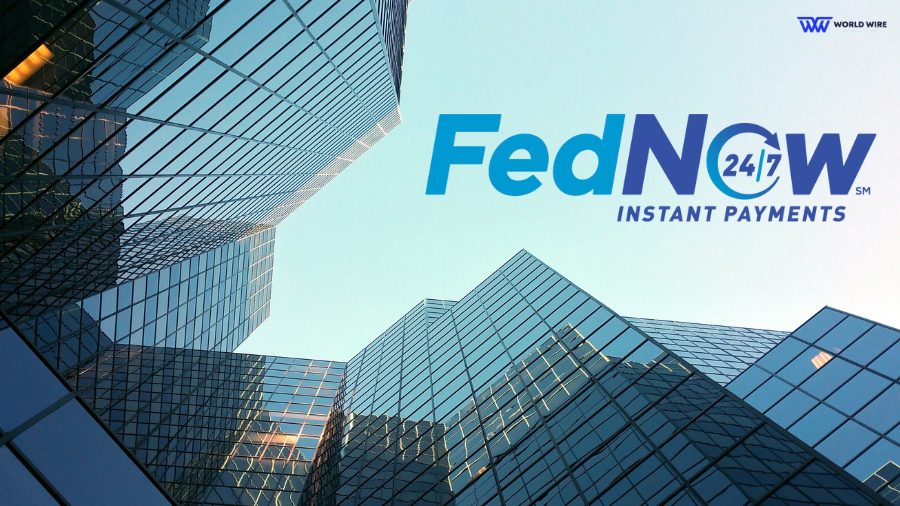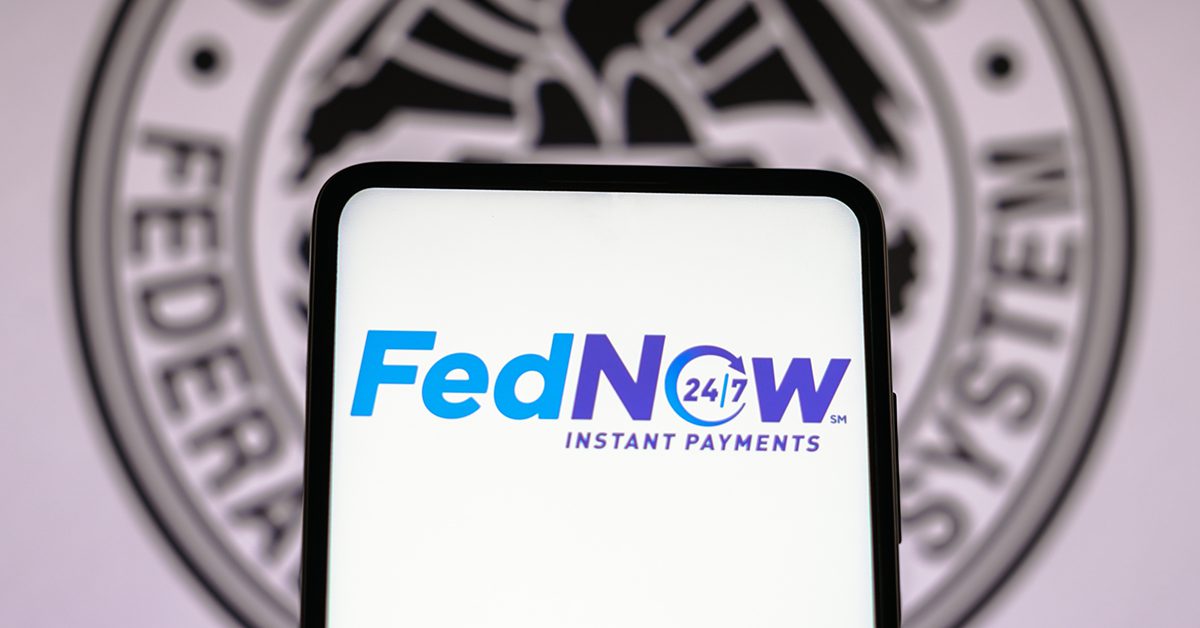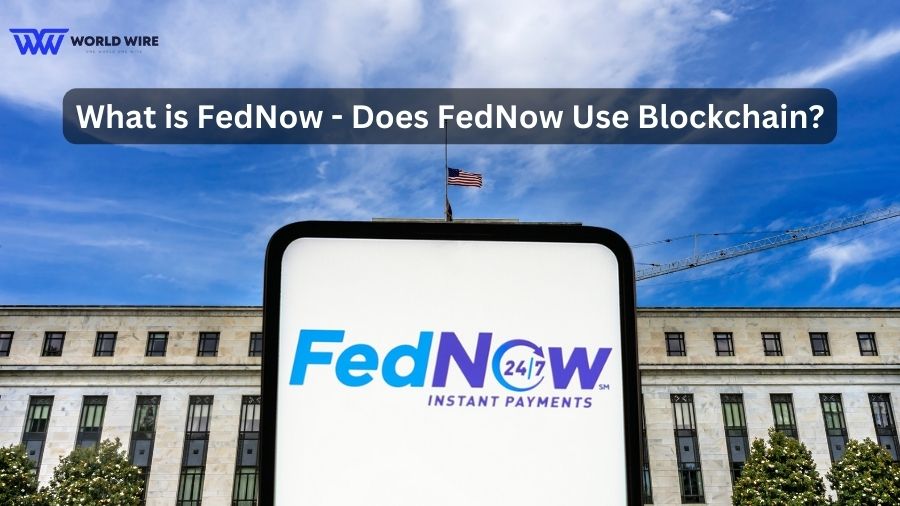Do you want to gain information about FedNow, and does it use Blockchain? If you have all these questions in mind, then you are in the right place.
The financial industry will get a new payment service this year. It will be possible to send instant payments anytime through the Federal Reserve.
However, it is important to note that, unlike consumer-facing transfer services like Venmo or Zelle, the service will only be available if your bank opts in.
Here’s what we need to know.
What is the FedNow?

FedNow is an instant payment service developed by the Federal Reserve Bank of the United States (Fed). It is designed to offer financial institutions end-to-end instant payment services and uninterrupted 24/7/365 processing.
It will feature integrated clearing functionality, enabling financial institutions to offer their customers instant payment services.
Does FedNow Use Blockchain?
No, FedNow doesn’t use blockchain. It is a centralized real-time payments system developed by the United States Federal Reserve that uses the ISO 20022 messaging standard to make faster payment transfers in real time.
On the other hand, Blockchain is a decentralized payment system that allows for secure, transparent, and tamper-proof transactions.
The main difference between FedNow and Blockchain is that FedNow takes less than a second to make a transfer, whereas Blockchain can take up to an hour to make a payment.
FedNow also charges less than blockchain per transaction.
How Does FedNow Work?

It is typical for banks to clear and settle payments between themselves. The clearing process involves banks exchanging information about payments and checking for fraud.
When the settlement is completed, the recipient’s account is credited with the money. The Federal Reserve says FedNow will make clearing and settlement possible within seconds.
- Faster transfer rate. Immediately. An instant payment allows the recipient to access the funds within seconds of receiving the payment.
- The cost. As with other Fed payment services, whether banks will pass FedNow costs onto their customers is still determined.
- Limits on amounts. Federal Reserve will cap transfer amounts at $500,000 and set a default limit of $100,000 for financial institutions, which can raise or lower it.
- Other limitations. The FedNow service will initially be limited to domestic payments between U.S. financial institutions.
When you need to make overseas transactions, consider transferring money through a bank or money transfer service – or opening a multicurrency account if you plan to travel for a long time.
What are the features of FedNow?

FederalNow includes various optional features based on the type of participation a financial institution prefers. These include:
Send and Receive
Those institutions that choose to send and receive can send, receive and return customer payments; they can send and receive credit transfers to support instant payment liquidity requirements; they can send customer-initiated Requests for Payments (RFPs) and choose to receive RFPs on behalf of customers as well.
Receive Only
Those who choose to receive only will receive liquidity payments from other financial institutions, return received payments, and send RFQs, but cannot receive them.
Liquidity Management Transfers
Those who opt into liquidity management transfers can complete high-dollar-limit credit transfers with other financial institutions at scheduled times, regardless of whether Fedwire Funds Service is available.
Settlement Services
The FedNow settlement service includes support for correspondent/respondent relationships; in particular, FedNow transactions for financial institutions that use correspondents will settle in the correspondent’s master account.
FedNow also includes fraud prevention tools, payments inquiry support, and liquidity management tools. The liquidity management tool will be available to FedNow participants and their traditional liquidity providers, and private-sector instant payment services that use Reserve Bank joint accounts.
Who Can Use FedNow?
FedNow can be used by businesses, consumers, and governments. The FedNow platform can simplify payments to customers, consumers, and employees of businesses, as well as speed up B2B transactions.
FedNow offers consumers a faster way to send funds between accounts, pay friends and family, and pay bills.
Using FedNow by the government could change the financial landscape radically – tax returns, for example, could be processed much more quickly.
Cost of Using FedNow
The following fees are expected for FedNow:
| Transaction type | Fee |
| Customer Credit Transfer (PACS.008) | $0.045 per item |
| Customer Credit Transfer Return (PACS.004) | $0.045 per item |
| Liquidity Management Transfer (LMT) (PACS.009) | $1.00 per item |
| Request for Payment (RFP) | $0.01 per item |
| Participation Fee – General | $25.00 per month |
- Fees for financial institutions (per routing number): $25 per month
- The sender pays each credit transfer at a rate of $0.045
- The fee for each RfP (Request For Payment) Message (optional) paid by the party requesting the message is $0.01, both for new payment notifications and for returns of payments.
- The initial credit transfer limit is $100,000, which financial institutions can decrease or raise to $500,000.
- The fees for these services are quite low compared to other payment systems and settlement services, like wire transfers. FedNow is operated by the Federal Reserve, which explains why. The Federal Reserve is not for profit as a government organization, so banks, businesses, and consumers can benefit from more competitive pricing.
FAQs
Is FedNow integrated with metal blockchain?
A partnership between Metal Blockchain and the Federal Reserve was announced in May 2023, allowing users of Metal to convert their funds between stablecoins and back again using FedNow’s “send/receive” function.
What is the difference between FedNow and FedWire?
FedNow, on the other hand, is accessible 24 hours a day, 7 days a week, and is not restricted by nights, weekends, or holidays. FederalNow transactions have a maximum value; Fedwire transactions do not; however, your bank may set a limit.
Is FedNow built on a blockchain?
FedNow, the Federal Reserve’s instant payment service, will be connected to Metal Blockchain, according to an announcement from the Metal Blockchain team on May 11.
What is the transaction fee that FedNow will Charge?
The sender must pay transaction fees of $0.045, including returns. A fee of $0.01 per request for payment (RFP) message includes new payments and refunds.
What is the limit on FedNow?
FedNow credit transfers have a maximum amount of $100,000. Financial institutions can lower or raise their credit transfer limit to $500,000. An adjustment will be made to the credit transfer limit as necessary by the Federal Reserve on an ongoing basis.
What are instant payment features in FedNow?
Instant payment refers to any account-to-account funds transfer in which the beneficiary receives the funds instantly. There may be some differences between schemes regarding timing, but payments are often completed in seconds. Thus, instant payments are also known as real-time or immediate payments. Instant payments have several benefits, including their irrevocability, ability to generate rich data, and availability 24/7/365.
Table of Contents







Add Comment